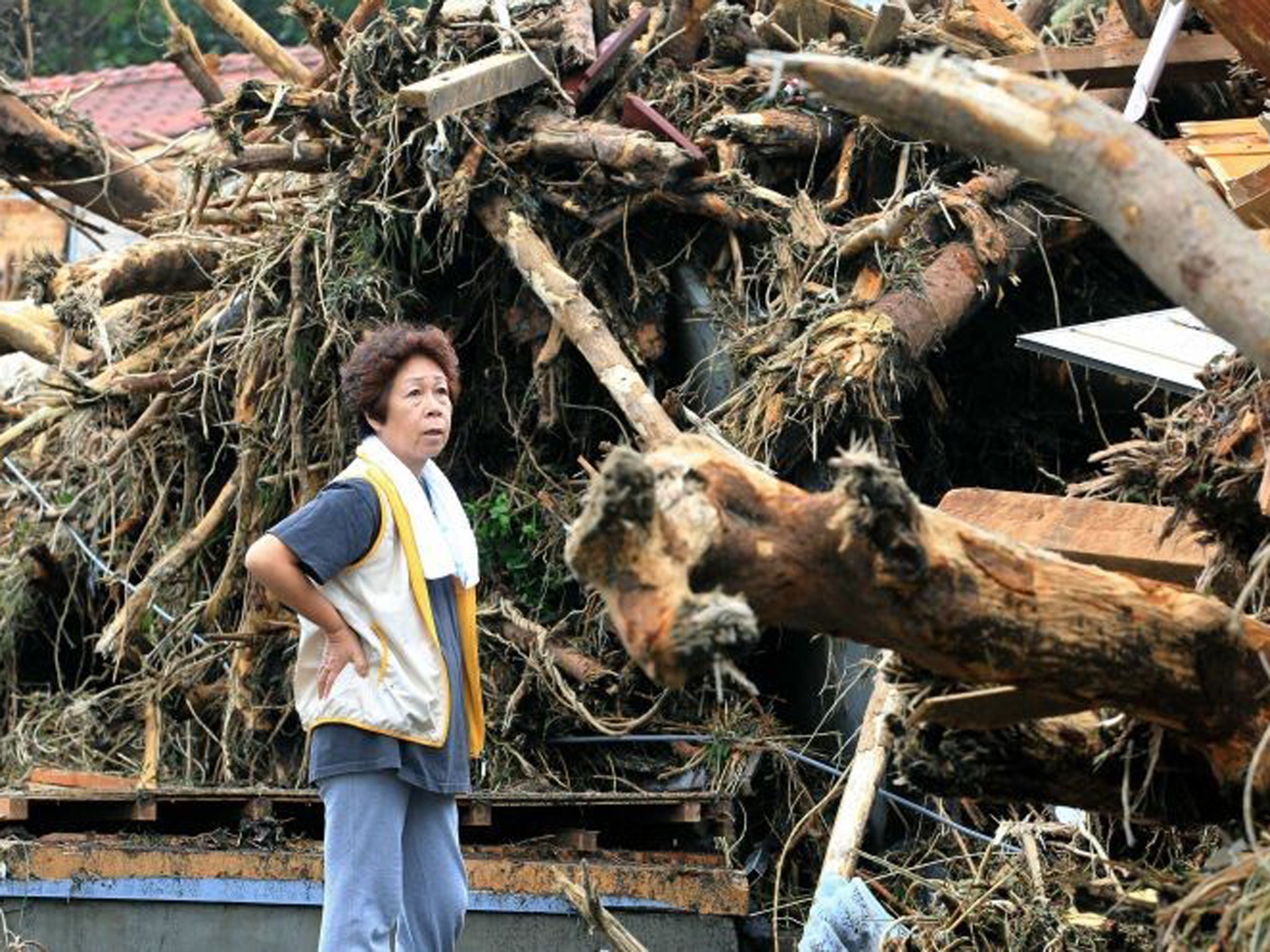Typhoon Wipha kills at least 17 in Japan as mudslides bury people on island of Izu Oshima
Dozens of homes destroyed and more than 50 people missing amid winds of up to 78 mph

A typhoon causing deadly mudslides that buried people and destroyed homes on a Japanese island this morning has killed at least 17 people.
Typhoon Wipha swept up the Pacific coast, grounding hundreds of flights and disrupting Tokyo's transportation during the morning rush.
Dozens of homes were destroyed and more than 50 people are thought to still be missing.
Hardest hit was Izu Oshima island about 120 kilometers (75 miles) south of Tokyo. Rescuers retrieved the bodies of 13 people, most of them buried by mudslides, authorities said. “We have no idea how bad the extent of damage could be,” town official Hinani Uematsu added.
One woman from Tokyo died after falling into a river and being washed 10 km downriver to Yokohama, police said. Two sixth-grade boys and another person were missing on Japan's main island, Honshu, the Fire and Disaster Management Agency said.
More than 350 homes have been damaged or destroyed, including 283 on Izu Oshima, it said.
Typhoon Wipha, which stayed offshore in the Pacific, had sustained winds of 126 kilometers per hour (78 mph) with gusts up to 180 kph.
More than 80 centimetres (30 inches) of rain fell on Izu Oshima during a 24-hour period, the highest amount noted since record keeping began in 1991.
The rainfall was so heavy before dawn that people in the area could not "see anything or hear anything,” Japan Meteorological Agency official Yoshiaki Yano said.
Izu Oshima is the largest island in the Izu chain southwest of Tokyo. It has one of Japan's most active volcanoes, Mount Mihara, and is a major base for growing camellias. About 8,200 people live on the island, which is accessible by ferry from Tokyo.
The Fukushima Dai-ichi nuclear power plant, crippled by the 2011 earthquake and tsunami, released tons of rainwater that were being held behind protective barriers around storage tanks for radioactive water.
Tokyo Electric Power Co. said only water below a legal level of radioactivity was released, which Japan's Nuclear Regulation Authority allowed on Tuesday. During an earlier typhoon in September, rainwater spilled out before it could be tested.
Additional reporting By Associated Press
Subscribe to Independent Premium to bookmark this article
Want to bookmark your favourite articles and stories to read or reference later? Start your Independent Premium subscription today.

Join our commenting forum
Join thought-provoking conversations, follow other Independent readers and see their replies